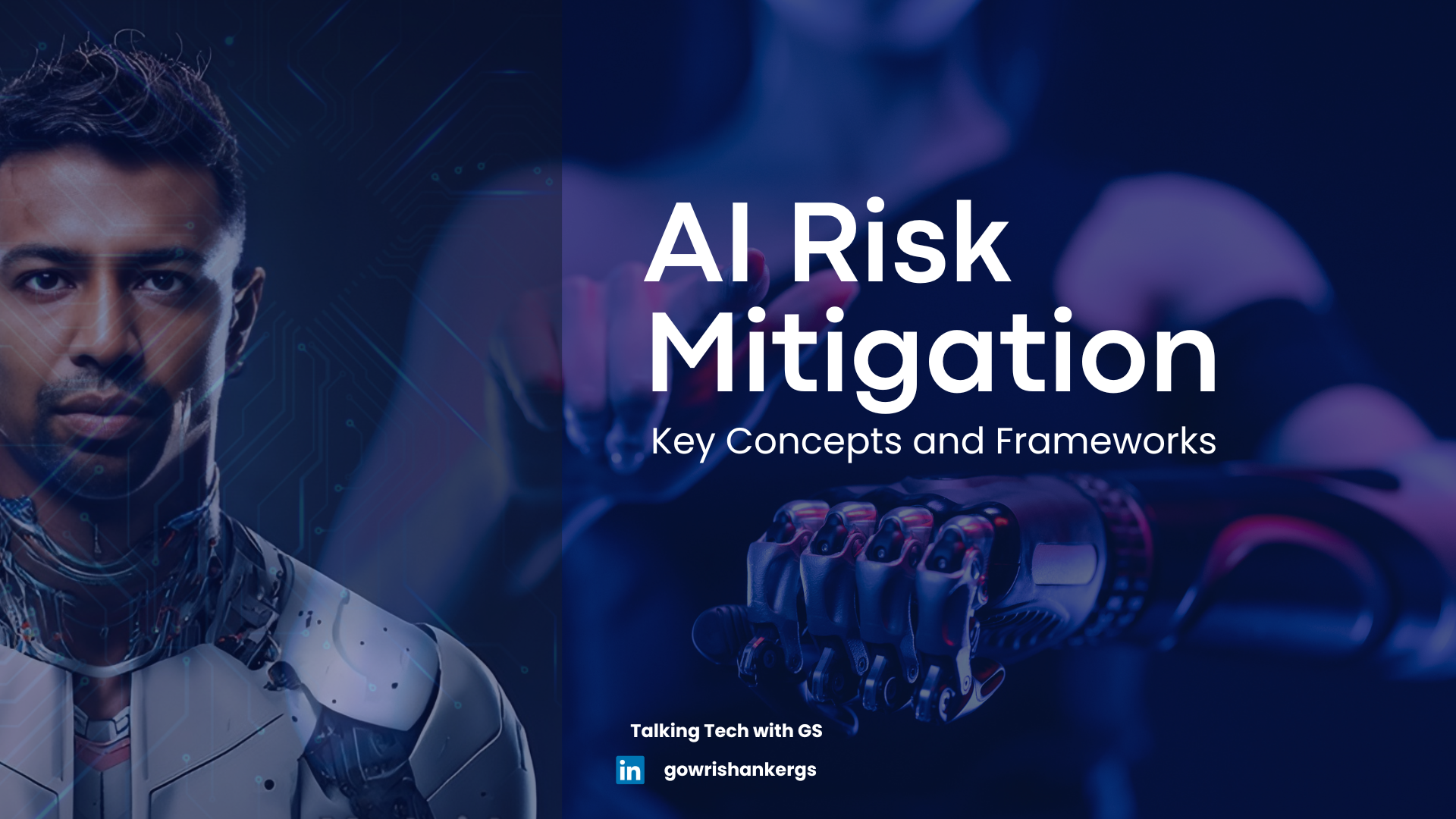As artificial intelligence (AI) continues to evolve and integrate into various sectors, effective risk mitigation strategies are crucial. Addressing concerns around fairness, transparency, and accountability forms the backbone of a responsible AI ecosystem.
Core Principles: Fairness, Transparency, and Accountability
- Fairness: Minimize biases to prevent discrimination.
- Transparency: Ensure users understand how AI systems make decisions.
- Accountability: Hold stakeholders responsible for AI outcomes.
AI TRiSM Framework
AI TRiSM (Trust, Risk, and Security Management) is an essential framework designed to enhance the reliability, trustworthiness, and security of AI models and applications. It provides a proactive approach to identifying and mitigating risks before AI systems are deployed, ensuring compliance, fairness, and data privacy. The framework is built around four key pillars: explainability and model monitoring, ModelOps, AI application security, and privacy. As organizations increasingly adopt generative AI, the risks associated with these technologies become more pronounced, making AI TRiSM crucial for effective governance and operational integrity. By integrating these practices, organizations can safeguard against potential adversarial attacks, maintain data confidentiality, and adapt to evolving regulatory landscapes, ultimately leading to improved user acceptance and business outcomes.

NIST AI Risk Management Framework
The NIST AI Framework, introduced on January 26, 2023, is a voluntary resource aimed at enhancing the trustworthiness of artificial intelligence systems while promoting responsible practices in their design, development, deployment, and usage. Defined as engineered or machine-based systems capable of generating outputs—such as predictions or recommendations—that influence various environments, the framework provides a structured approach for organizations and individuals, referred to as AI actors, to manage and mitigate risks associated with AI. By addressing potential threats to civil liberties and individual rights, the NIST AI Framework not only seeks to minimize negative impacts but also aims to maximize the positive effects of AI technology, ensuring ethical adoption, accountability, and transparency throughout the AI lifecycle.

HART Framework
The Health AI Risk Taxonomy (HART) framework provides a structured approach to identifying and assessing the harmful risks associated with AI in the healthcare sector from ethical, societal, and legal perspectives. Developed based on real-world incidents documented in the AIAAIC repository, HART categorizes risk sources, potential consequences, and impacts, thereby assisting organizations in conducting thorough AI risk and impact assessments. It highlights the stakeholders who may be negatively affected by AI implementations and identifies critical areas that could be adversely impacted. By promoting a strategic approach to the responsible use of AI in healthcare, HART aims to align technological advancements with the needs of researchers, policymakers, practitioners, and users. While not exhaustive, as it relies on publicly available resources, future iterations of HART will seek to incorporate insights from health domain experts and analyze additional resources, enhancing its applicability in real-world scenarios.
“The world of enterprise software is going to get completely rewired. Companies with untrustworthy AI will not do well in the market.” Abhay Parasnis – Founder and CEO, Typeface
AI Risk Domains
AI risk can be categorized into several domains:
- Discrimination: Ensuring that AI systems do not reinforce societal biases.
- Toxicity: Mitigating harmful content generation and interactions.
- Privacy and Security: Protecting user data from breaches and misuse.
- Misinformation: Preventing the spread of false information through AI-generated content.
- Environmental Impacts: Considering the ecological footprint of AI technologies.
- Malicious Actors: Guarding against the exploitation of AI by malicious entities.
- Human-Computer Interaction: Designing systems that promote positive user experiences.
- AI System Limitations: Understanding and addressing the limitations and potential failures of AI systems.
Dubai/DIFC AI Regulation
In the UAE, particularly within the Dubai International Financial Centre (DIFC), regulations are being established to govern AI usage. These regulations emphasize ethical practices and the need for organizations to comply with established guidelines, ensuring that AI technologies are developed and deployed responsibly.
DIFC Regulation 10 Document can be accessed here:
https://www.difc.ae/business/registrars-and-commissioners/commissioner-of-data-protection/regulation-10
Conclusion
Mitigating AI risks requires a multifaceted approach that encompasses fairness, transparency, and accountability, supported by frameworks like AI TRiSM and the NIST AI Risk Management Framework. By addressing key risk domains and adhering to regulatory standards such as those in UAE, organizations can foster a safer and more ethical AI landscape, ultimately enhancing public trust and societal benefit.
References:
NIST AI RMF 1.0
A framework for artificial intelligence risk management. Journal of Theoretical and Applied Information Technology
Towards a taxonomy of AI risks in the health domain. In: 2022 Fourth International Conference on Transdisciplinary AI (TransAI)
MIT CSAIL (2023). Global AI adoption is outpacing risk understanding, warns MIT CSAIL. Available at: https://www.csail.mit.edu/news/global-ai-adoption-outpacing-risk-understanding-warns-mit-csail
#AI #RiskMitigation #Fairness #Transparency #Accountability #EthicalAI #AIRegulation #NIST #Dubai #DIFC #AIFrameworks #Innovation #TrustInAI

